Ground cover in the aquarium
Table of contents
In addition to typical stem plants or the usual rosette and perennial plants, ground covers are also popular aquarium plants. They are excellent for creating lawn-like areas, carpets or cushions in the front and middle areas and therefore also belong to the foreground plants. Their rather low growth of just 2 to approx. 10 centimetres perfectly underlines a beautiful hardscape in the background without dominating it. Depending on the size of the aquarium, you should therefore pay attention to the possible final height when choosing ground covers, but also to their requirements if you want to keep different plants together. However, these are usually indicated on the plants sold, so that when scaping you can see at a glance which spot in the aquarium is particularly suitable.
Achieving effects with different ground covers
Depending on the layout of the aquarium or, better put, the aquascape, different ground covers are suitable for different effects. Some have different leaves, while others are grass-like. A great mix of different leaf shapes, colours and textures breathe life into a beautiful scape. Regular trimming is a must, however, so that the plants do not grow uncontrollably into each other and overgrow the original design.
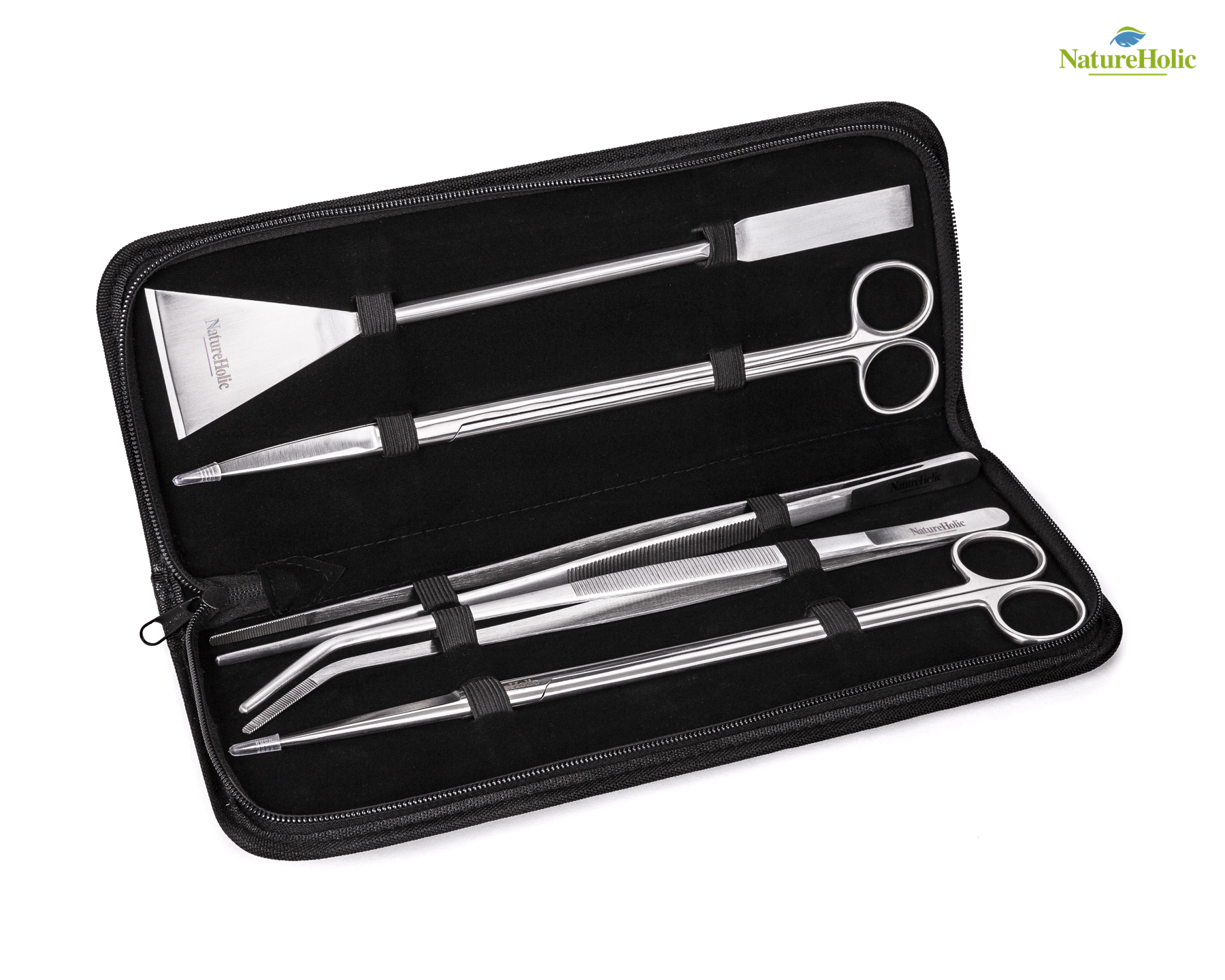
Planting and caring for ground cover
For plants that have been grown in vitro, simply remove the nutrient substrate or solution. It is also very easy to remove the jelly from the roots with straight, narrow tweezers. Potted plants are freed from the rock wool as thoroughly as possible, but this is very difficult, especially with fine ground covers, and could possibly damage them. If you leave some of the rock wool on the roots, it acts as an anchor and holds the plant reliably in the substrate.
It is best to divide the plants into smaller groups and plant them individually, as it is often difficult or even impossible to plant them alone. Alternatively, you can use so-called plant mats. These are made of stainless steel or foam on which the plant has already taken root. If you now place this mat on the substrate and bury it a little, it will soon take root and continue to grow from there, so that the original mat is no longer visible.
With different Scaping Tools are used to keep the underwater artwork in shape and trim it. If this care is neglected, it can happen that some ground covers detach themselves in whole pads or become so intergrown that the lowest plants no longer get enough light and discolour or fade.
Especially with very delicate ground covers, straight, fine and softer tweezers with a pointed tip are suitable for inserting the fresh greenery as deeply as possible into the soil without damaging it. Angled twe ezers can also be used to reach difficult places, such as small spots in the hardscape.
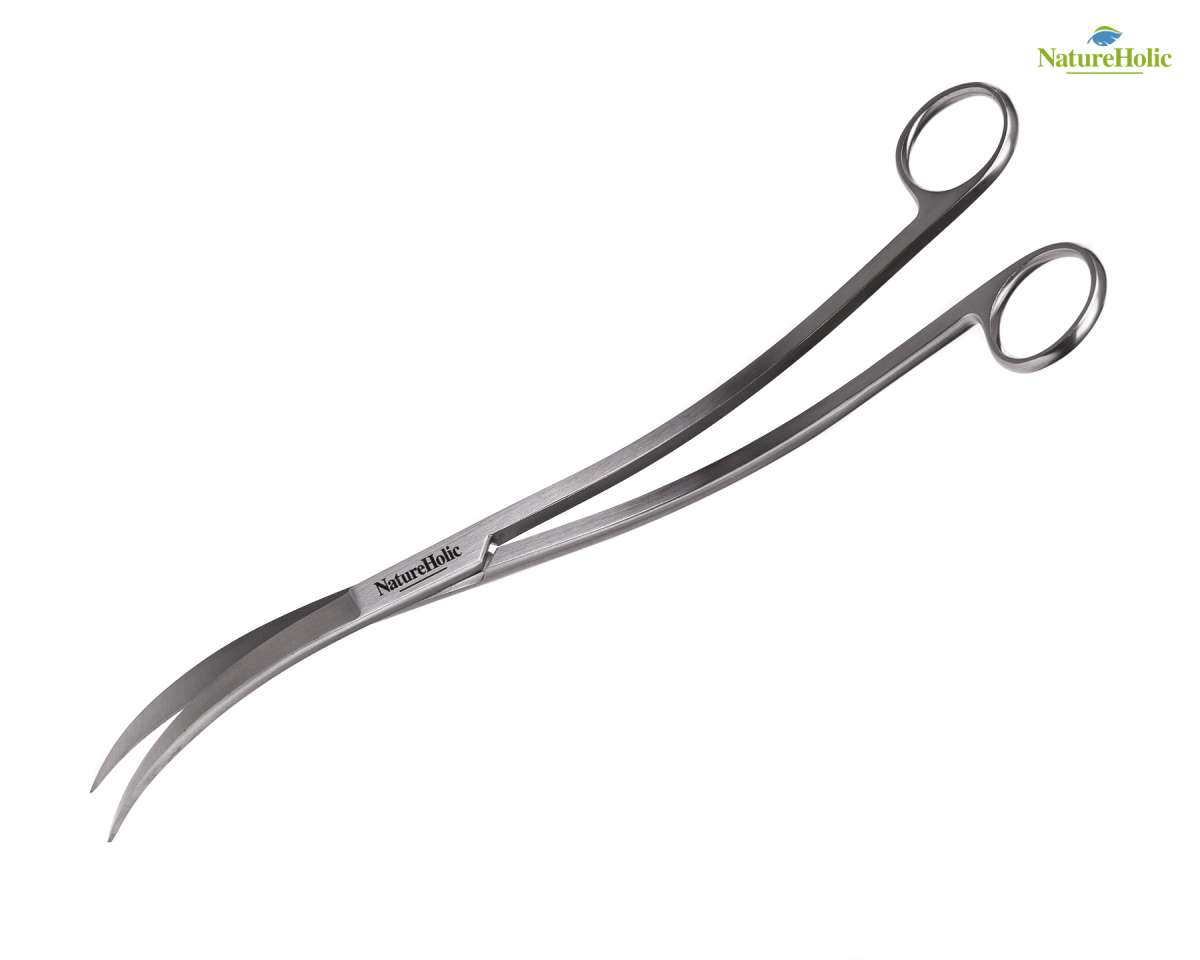
With curved Wave shears can be used to trim lawns on the ground accurately and straight. Straight shears would always have a cutting angle that would lead to a different high cutting result, and there is also the risk of blunting the shear tip if it accidentally gets into the soil substrate; they are better suited to stem plants or plants in the mid to upper water area. It is also very cumbersome to maintain. Spring scissors are also ideal, as they open on their own and are usually smaller, making them ideal for use in interlocking scapes.
Cushion-forming ground covers - a few species at a glance
In hilly landscapes, such as in an iwagumi, low and creeping plants can be used to create great landscapes, with their small and rounded leaves creating a very natural look. But ground covers with different leaf structures are also great as cushions or carpets.
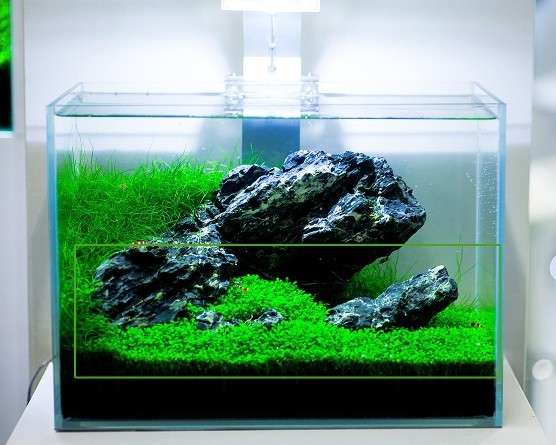
Especially the Cuba Dwarf Pearlwort (Hemianthus callitrichoides cuba), but also Micranthemum sp. Monte Carlo are ideal for this purpose - both are similar in appearance, although the latter is very easy to care for, even for beginners. They grow creeping over the substrate and form a great and extensive cushion that also adds some depth. The Cuba Dwarf Pearlwort prefers a good supply of nutrients, a medium to high light supply and likes it a bit warmer at 18-28 °C. With an optimal supply, it visually indicates its name, because then it produces small oxygen bubbles. With its really very fine rootlets, planting can be made easier with a substrate of soil by adding a layer of pulverised soil (powder) on top. Alternatively, ready-made Scape Pads or planting stones can be used, or you can tie it up yourself - after a little while it will simply multiply from there.
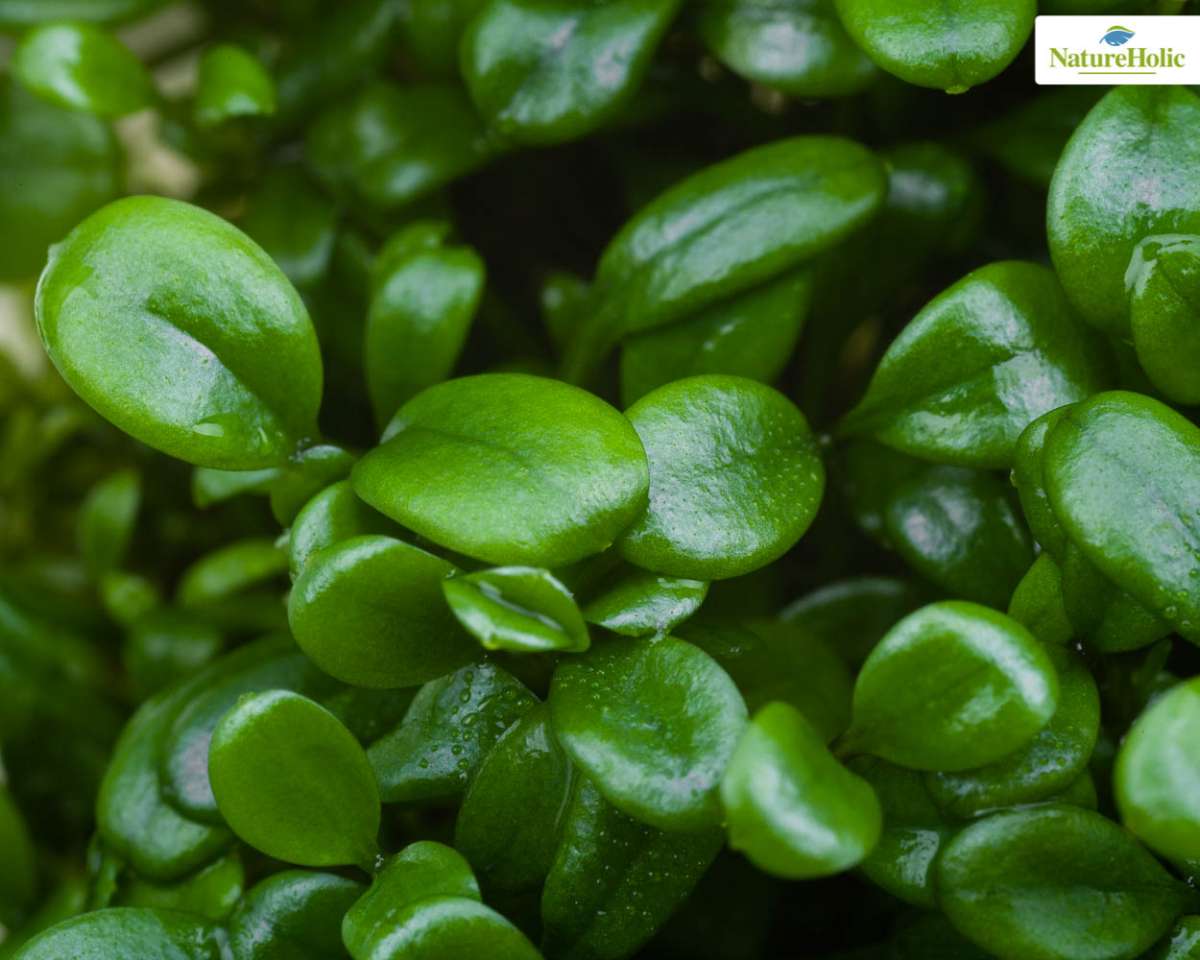
A dense and low carpet is also formed by the Australian tongue-leafGlossostigma elatinoides, which grows only 2-3 centimetres high and occurs in nature mainly in swamps and flooded areas. Especially in the natural aquariums of Takashi Amano, the "Glosso" was used as a ground cover. A very good CO2 supply and a high light source are advantageous, otherwise it tends to form taller and spindle-shaped shoots. With comfortable temperatures of 4-30 °C, it is quite flexible and can be kept in medium-hard water up to 14° dH.
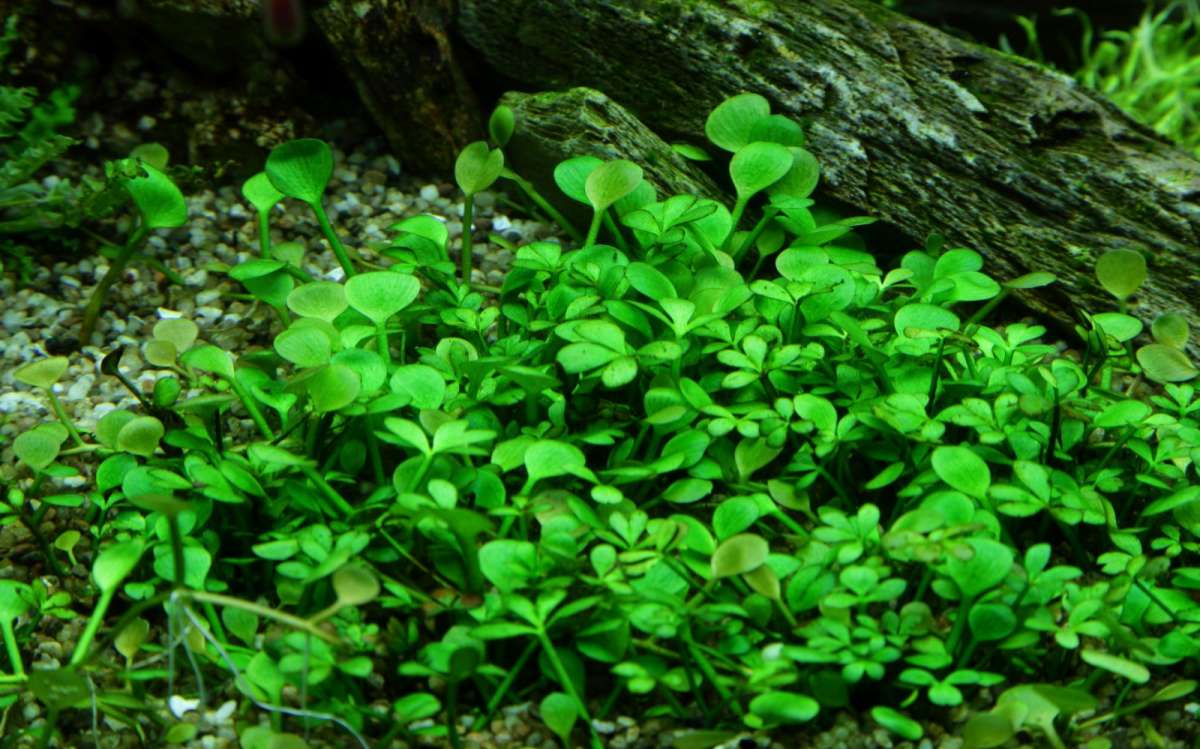
The Australian Clover Fernalso called dwarf cloverleaf or dwarf c lover fern(Marsilea hirsuta), also comes from Australia, like its little sister, the mini cloverleaf Marsilea crenata. In the emersed growth form it does indeed resemble a cloverleaf, but under water it forms rather egg-shaped leaflets. In low light, however, these enlarge and return to their original shape. With a shoot height of only 1 cm, this quite undemanding plant, which also reproduces via underground runners, remains quite small and forms great carpets. An additional CO2 supply is not necessary, 18-30 °C and a total hardness of up to 14 °dH allow tolerances.
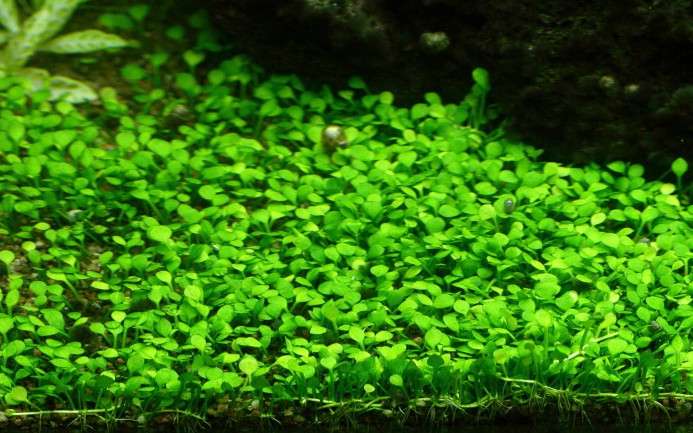
Another relative is the Narrow-leaved Clover or also called narrow-leaved clover fern - the Marsilea angustifolia, also an Australian, but which, as its name suggests, forms narrower lucky clovers. It reproduces in the same way as other clover ferns and is just as easy to care for. It also quickly forms dense plant cushions, which can be accelerated with CO2 - but the additional supply is not necessary, as it is very frugal.
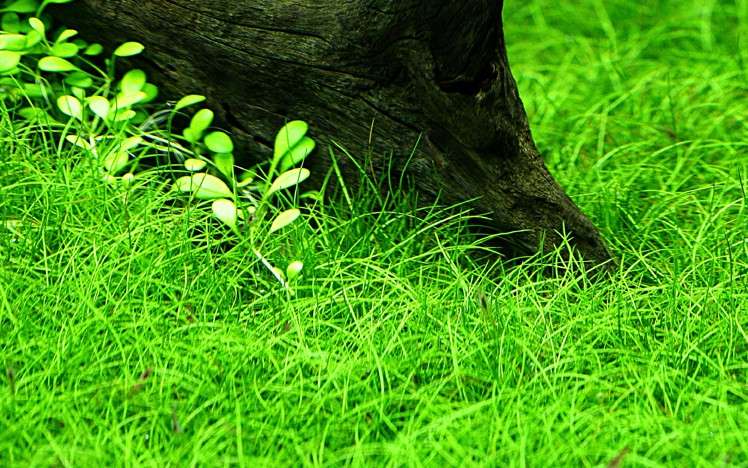
Grassy ground covers
Grass-like ground covers, which reproduce via underground runners, are particularly suitable for planting around the edges of stones or roots, but also for lawn-like areas. They can also be used to create meadow landscapes very easily and create a very natural flair. If you cut off a runner with a daughter plant, they can easily be replanted somewhere else.
These plants, which are available both as InVitro but also as potted plants, are best divided into small portions and planted at a distance of 3 to 5 centimetres from each other. Especially conventionally pot-grown plants often find the transition somewhat difficult and their culms die. Therefore, before introducing them into the aquarium, they should be cut down to a height of about 1 cm so that new shoots get more light and quickly grow together again strongly.
These ground covers are great for creating grass or meadow landscapes:
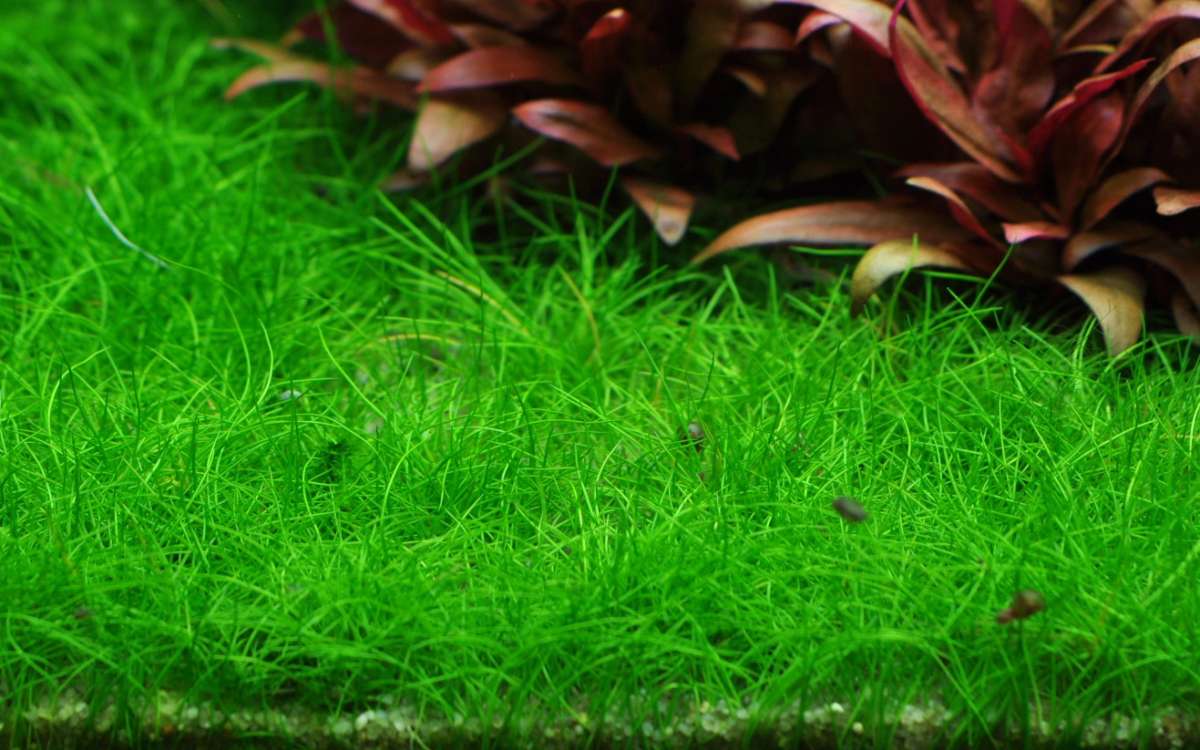
Eleocharis parvula is a pretty needle cress that is very easy to care for without CO2 and originates from Australia. It grows to a height of 5 cm and forms slightly curved and fine stalks. If it is regularly cut down, it grows densely and compactly together and closes gaps quite quickly. The needle lime feels most at home at a total hardness of up to 16 ° dH and temperatures of 12-27 °C and requires a medium to high amount of light.
The dwarf needle lime Eleocharis pusilla or parvula, on the other hand, is the mini representative and, at 3-5 centimetres, remains somewhat smaller than its larger sister, but has the same care requirements.
The small blyx weed, Blyxa japonica, is mainly known from the natural aquariums of Takashi Amano, who liked to use it in the foreground. In terms of care, it is somewhat more demanding and prefers very soft water with a total hardness of up to 7 °dH and water temperatures between 16 and 32 °C. It should also be kept in a water that is not too hard. Likewise, the Little Blyxweed should have a lot of light and a very good supply of micronutrients and macronutrients. With a height of 5-7 centimetres, it is ideal for the foreground and forms bushes with side shoots that can be propagated by cutting them off and planting new ones.
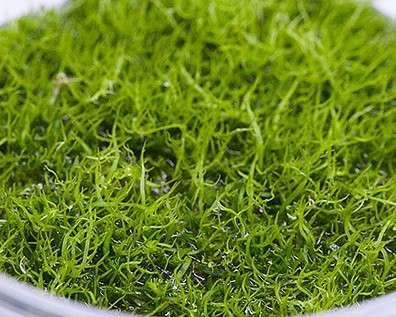
From Asia comes the Grass-like Water HoseUtricularia graminifolia, which forms great lawns through underground runners. It does particularly well in soft to medium-hard water up to 12° dH and temperatures of 16 to 28 °C. It definitely needs CO2 and a medium light supply. In the beginning, however, the somewhat sensitive water hose should be acclimatised in more shade, and it does not tolerate squeezing well. Although it is considered a carnivorous plant, it is only really dangerous for accompanying fauna smaller than a hatchling.
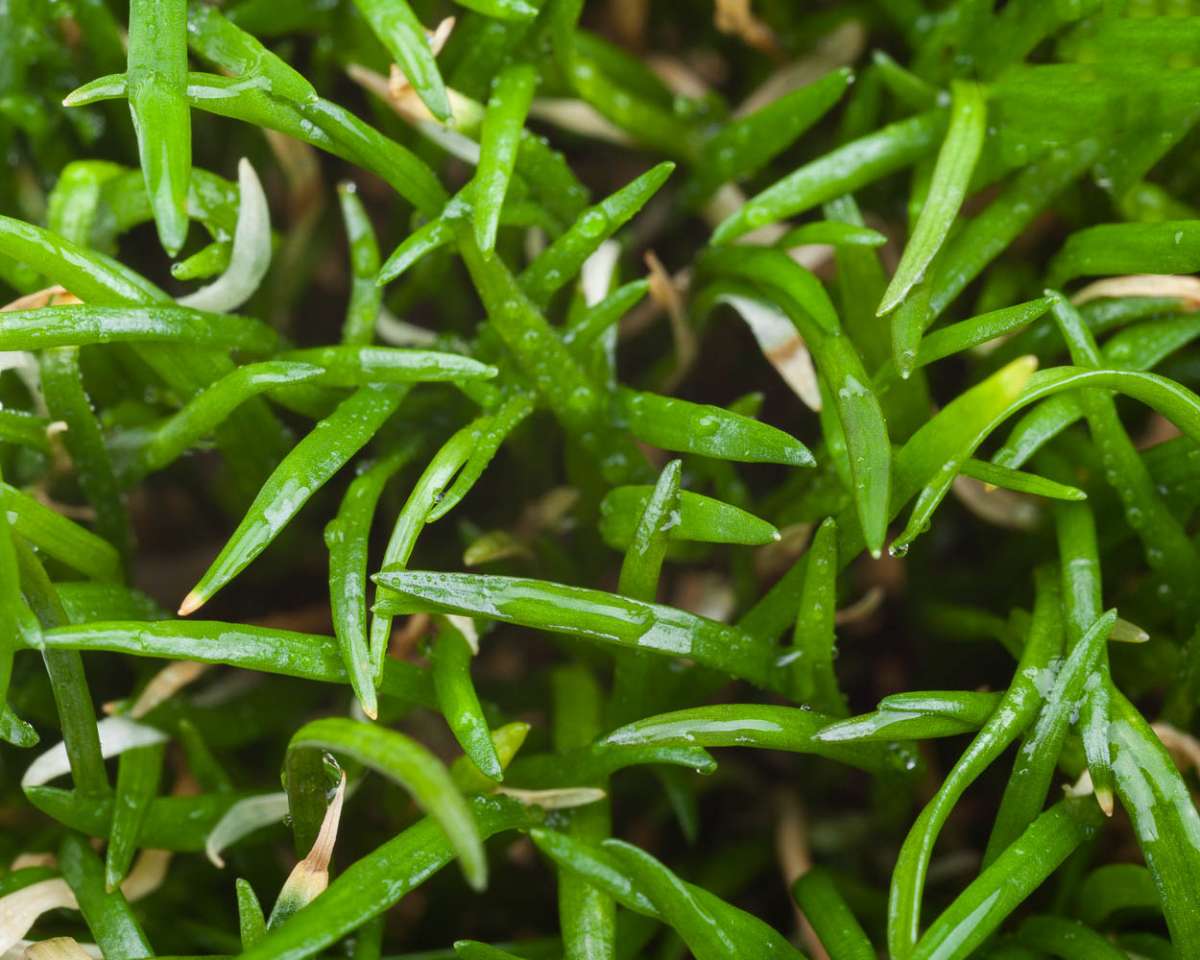
The Grass-like Dwarf Swordplant Helanthium tenellum, formerly known as Echinodorus tenellus, is a pretty and fast-growing sword plant that grows 6-8 cm high and is a great eye-catcher. It forms runners and a lawn-like appearance. You can accelerate the growth with CO2, but it is not a must. Its size makes it ideal for the foreground of aquascapes from 54 litres upwards. It can be easily maintained at 18-26 °C, medium to strong light and a water hardness of up to 14 °dH. Regular trimming keeps its shape.
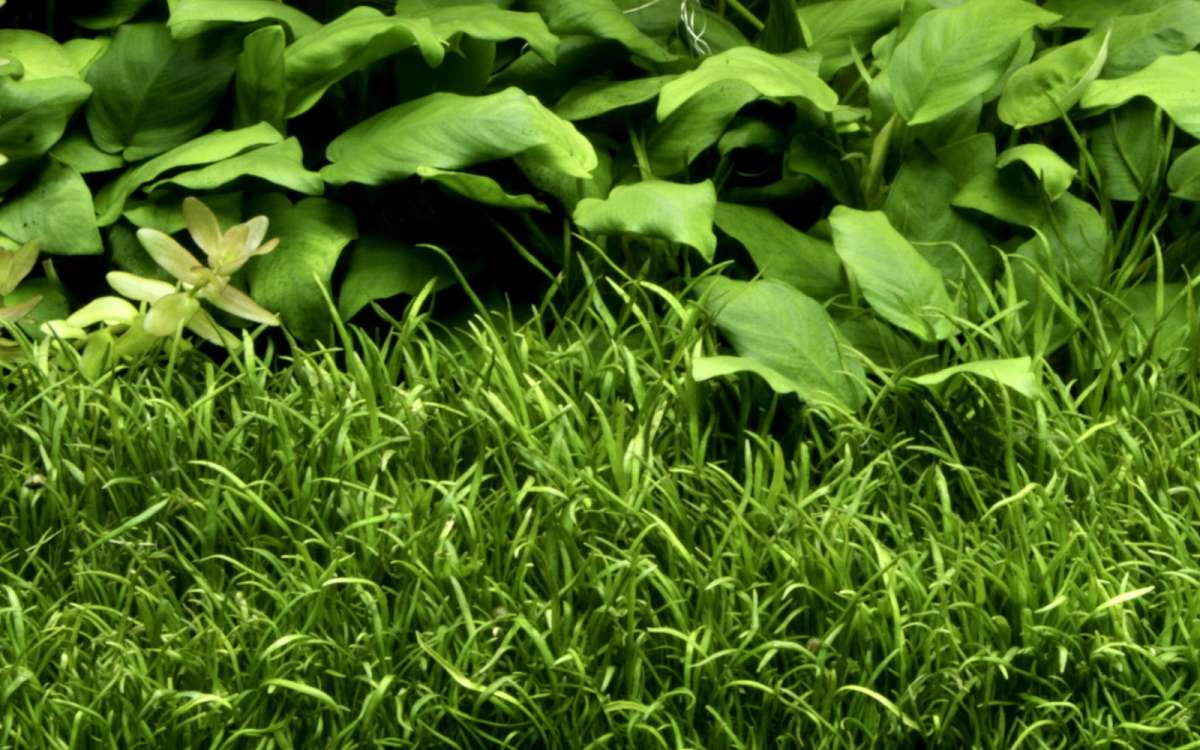
From South America comes the Brazilian grass Lilaeopsis brasiliensis, which is perfect for aquascapes or planted aquariums. With a height of 4-6 centimetres, it forms grass-like runners and remains quite compact. It does well in soft to medium-hard water up to 14 °dH and does not necessarily need a CO2 supply. Interestingly, its height can be influenced by the light intensity: the stronger the lighting, the lower it stays.
